26 Bikram Yoga Poses: Plus Amazing Benefits of Hot Yoga
Do you want to improve your flexibility, strength, and peace of mind? If so, you should consider giving hot yoga a try. Bikram yoga is a type of hot yoga that is practiced in a heated room.
This intense heat allows you to stretch further and achieve deeper poses than you would in a traditional yoga class. In this blog post, we will discuss the benefits of hot yoga and provide a list of 26 bikram yoga poses for beginners!
Related Article: Exploring Different Styles of Yoga: Which One Suits You Best?

This post may contain affiliate links, which helps keep this content free. Please read our disclosure for more info.
What is Bikram Yoga?
Bikram Yoga is a type of hatha yoga that is practiced in a hot room. The temperature is typically set to around 105 degrees Fahrenheit, and the humidity is kept at around 40%.
This allows for a deep, detoxifying sweat during the practice. The room is also well-ventilated, so that toxins can be flushed out of the body.
Bikram Yoga consists of 26 postures, or asanas, that are performed in sequence.
The postures are designed to work every part of the body, and they are often performed in a mirror so that students can check their alignment. The class is typically 90 minutes long, and it is recommended that students drink plenty of water before and after the practice.
Bikram Yoga is an excellent way to release toxins from the body, improve flexibility, and build strength.
What’s The Difference Between Bikram And Hot Yoga?
Most people have heard of yoga, and many have even tried a class or two. However, there are different types of yoga, and each one has its own benefits.
Hot yoga is style of yoga that is practiced in a heated room, but the temperature is typically not as high as in Bikram yoga.
Bikram yoga is a style of hot yoga that is practiced in a room that is heated to approximately 105 degrees Fahrenheit. The heat helps to loosen muscles and promote detoxification through sweating.
Bikram yoga follows a specific sequence of 26 poses, while hot yoga classes may vary in their poses.
Both types of yoga are excellent for improving flexibility and both are especially good for beginners because the heat can help to loosen muscles.
The Benefits of Hot Yoga
There are many benefits to practicing hot yoga, including improved flexibility, detoxification, and increased strength.
Hot yoga is also an excellent way to relieve stress, improve circulation, and boost your energy levels.
If you are new to hot yoga, it is important to start slowly and listen to your body. Drink plenty of water before and after your practice, and take breaks if you need to.
Now that we’ve talked about the benefits of hot yoga, let’s take a look at some of the bikram yoga poses that you can expect to find in a Bikram yoga class.
Related Article: 5 Amazing Health Benefits Of Hot Yoga
The Bikram Yoga Sequence
Many of the traditional names for yoga poses seem strange and are very hard to pronounce. The names are based on the Sanskrit language.
I’m including both the English and Sanskrit names for each posture, but it’s totally acceptable to use the more simple, English version when referring to the yoga poses.
Here is the full list for the sequence. Scroll down for more details on each pose.
- Standing Deep Breathing (Pranayama)
- Half Moon Pose (Ardha Chandrasana)
- Awkward Pose (Utkatasana)
- Eagle Pose (Garudasana)
- Standing Head To Knee Pose (Dandayamana-Janushirasana)
- Standing Bow Pose (Dandayamana-Dhanurasana)
- Balancing Stick Pose (Tuladandasana)
- Standing Separate Leg Stretching Pose (Dandayamana-Bibhaktapada-Paschimotthanasana)
- Triangle Pose (Trikonasana)
- Standing Separate Head To Knee Pose (Dandayamana-Bibhaktapada-Janushirasana)
- Tree Pose (Vrikshasana)
- Toe Stand Pose (Padangustasana)
- Dead Body Pose (Savasana)
- Wind-Relieving Pose (Pavanamuktasana)
- Sit Up Pose (Padahastasana)
- Cobra Pose (Bhujangasana)
- Locust Pose (Salabhasana)
- Full Locust Pose (Poorna Salabhasana)
- Bow Pose (Dhanurasana)
- Fixed Firm Pose (Supta Vajrasana)
- Half Tortoise (Ardha Kurmasana)
- Camel Pose (Ustrasana)
- Rabbit Pose (Sasankasana)
- Sitting Head To Knee Stretching Pose (Janushirasana-Paschimottanasana)
- Spine Twisting Pose (Ardha Matsyendrasana)
- Skull Shining Breathing Technique (Kapalbhati Pranayama)
The Bikram Yoga Poses
The order of poses is important for bikram yoga because it helps to gradually warm up the body and prepare it for the more strenuous poses that come later in the sequence.
The first few bikram yoga poses are designed to increase circulation and heart rate, while the later poses focus on deep stretching and strengthening.
Here is a closer look at each of the 26 bikram yoga poses:
Standing Deep Breathing (Pranayama)
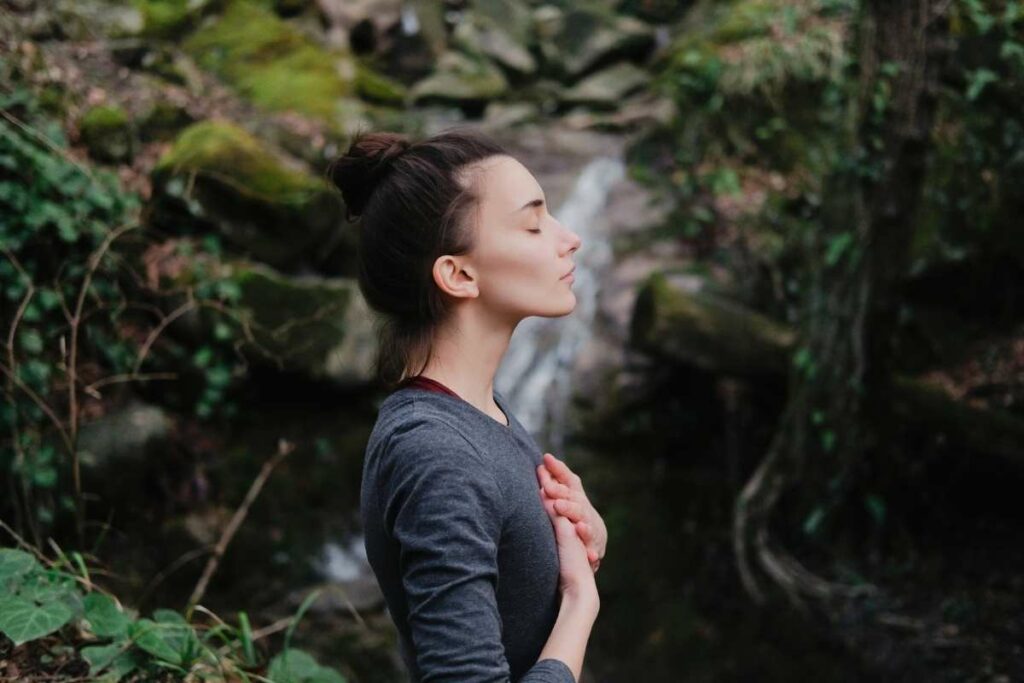
This pose helps to calm the mind and relax the body.
Pranayama is an ancient practice that has many benefits for both the mind and body. The word itself comes from the Sanskrit words “prana” and “ayama,” which mean “life force” and “extension,” respectively.
When performed correctly, pranayama can help to improve respiratory function, increase energy levels, and promote relaxation. It can also be helpful in managing stress and anxiety.
There are many different ways to perform pranayama, but one of the most common is known as “standing deep breathing.”
To do this pose, simply stand with your feet together and your arms at your sides. Take a deep breath in through your nose, and then exhale slowly through your mouth. As you exhale, imagine that you are pushing all of the air out of your lungs.
Repeat this process several times, keeping your breath deep and steady throughout.
Half Moon Pose (Ardha Chandrasana)
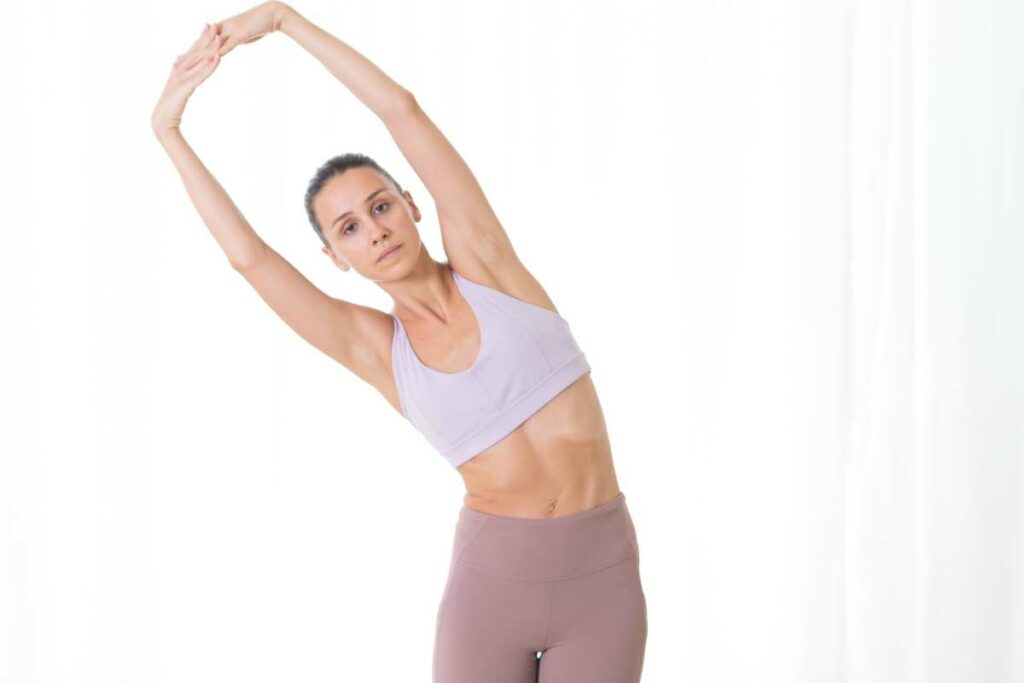
This bikram yoga pose strengthens your core, increases your spine’s flexibility, and improves kidney functioning. It’s also great for firming your body and toning your hips, buttocks, thighs, and abdomen.
To perform the Half Moon Pose, begin by standing with your feet together and your arms at your sides. Take a deep breath in through your nose, and then exhale slowly through your mouth as you bend to the right at the waist. As you exhale, imagine that you are pushing all of the air out of your lungs. Repeat on the left side.
Awkward Pose (Utkatasana)
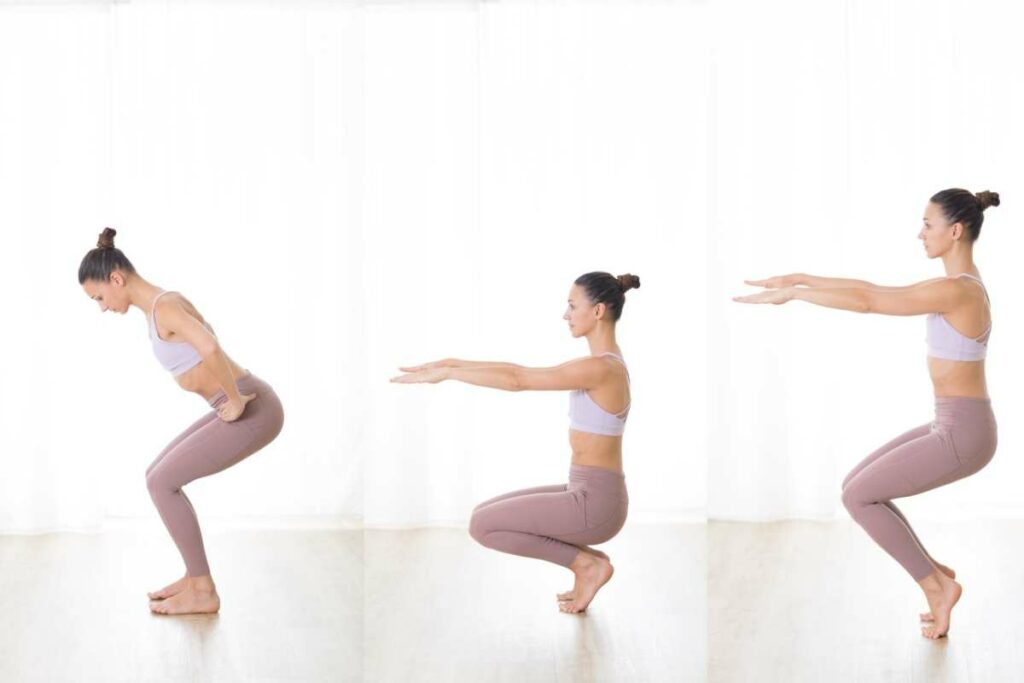
The Awkward Pose, or Utkatasana, is a great way to stretch the muscles of the legs and back. It also helps to improve balance and strengthen the core.
To perform the pose, start in a standing position with the feet shoulder width apart. With the palm of your hands facing down, stretch your arms forward. Then, bend the knees and lower the hips into a squatting position, as if you were sitting in an invisible chair.
Eagle Pose (Garudasana)
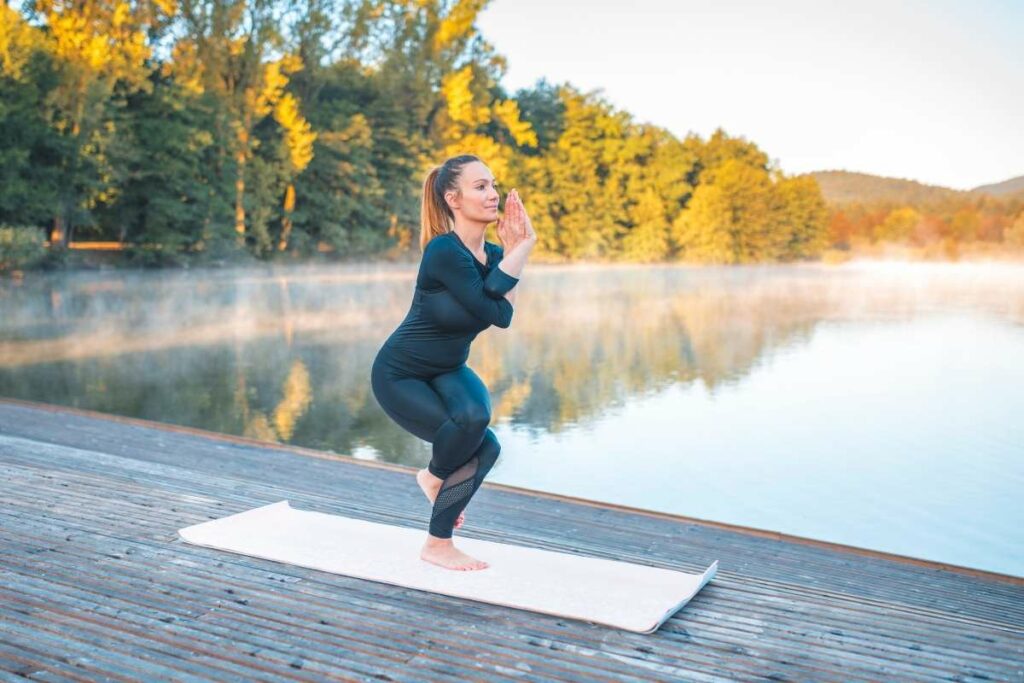
Eagle pose is a challenging yoga pose that provides a variety of benefits. It strengthens the muscles of the legs, hips, and core, while also increasing flexibility in the shoulders and spine.
Additionally, eagle pose helps to improve balance and concentration. The key to performing eagle pose correctly is to maintain a strong foundation.
Start by standing with your feet hip-width apart and your arms at your sides. Next, raise your right leg and wrap it around your left leg, bringing your foot to rest near your left ankle.
Then with your arms bent at a 90-degree angle, interlock your elbows and wrap your right hand over your left. Repeat with the other side.
Standing Head To Knee Pose (Dandayamana-Janushirasana)

The benefits of the Standing Head to Knee Pose are numerous. This pose strengthens the entire body, from the ankles to the crown of the head. It also helps to improve digestion and equilibrium, and can even help to relieve stress and tension headaches.
In addition, the Standing Head to Knee Pose helps to lengthen and tone the muscles of the legs, back, and arms.
To perform the Standing Head to Knee Pose, begin in Mountain Pose. Then, bend forward at the hips and place your hands on your knees.
Next, bring your right foot up towards your right hand, keeping your left leg straight. Place your right hand on your right ankle, and slowly extend your left arm overhead.
Hold this position for several breaths, then return to Mountain Pose and repeat on the other side.
Standing Bow Pose (Dandayamana-Dhanurasana)
Standing bow pose is a great way to stretch the muscles in your back and improve your posture. The pose also helps to strengthen your core and improve your balance.
To perform standing bow pose, start by standing with your feet hip-width apart. Then, grab hold of your right ankle with your right hand from behind. Slowly raise the right leg behind you while holding your ankle. Release and repeat on the left side.
This post requires a lot of balance, so if you feel unsteady, try holding on to a chair or wall for support.
Balancing Stick Pose (Tuladandasana)
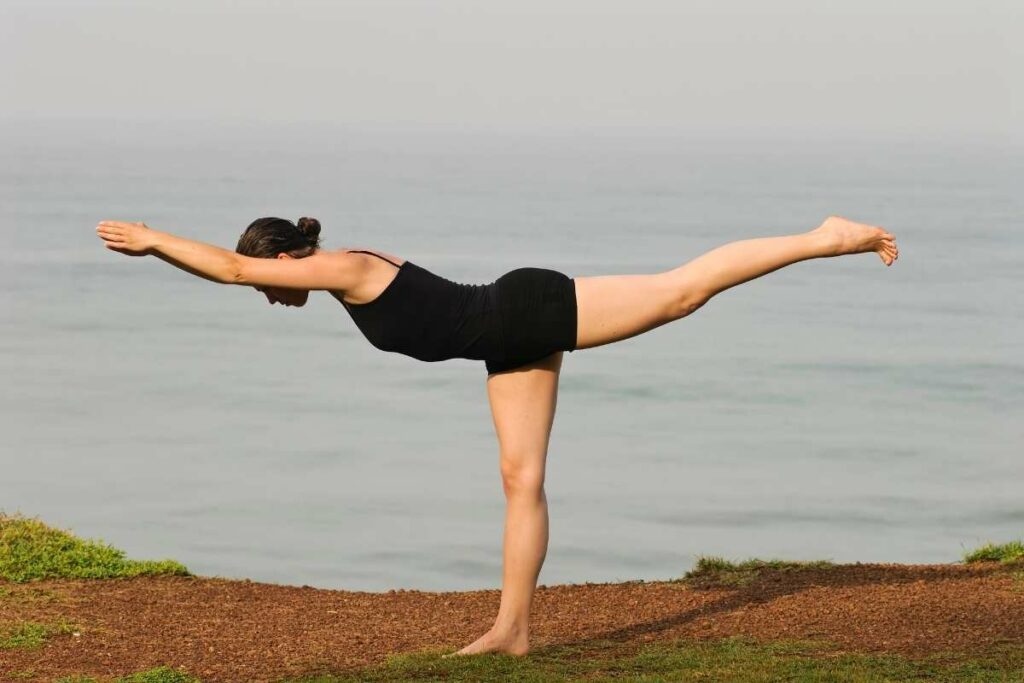
The Balancing Stick Pose is a great way to improve your balance and coordination. It also helps to strengthen your core muscles and stretch your spine.
To perform the pose, stand with your feet hip-width apart and your arms by your sides. Bend forward at the hips and place stretch your arms in front of you. Engage your core muscles and lift your left leg straight behind you, forming a “T”. Hold the pose for 30 seconds to 1 minute, then switch sides and repeat.
Standing Separate Leg Stretching Pose (Dandayamana-Bibhaktapada-Paschimotthanasana)
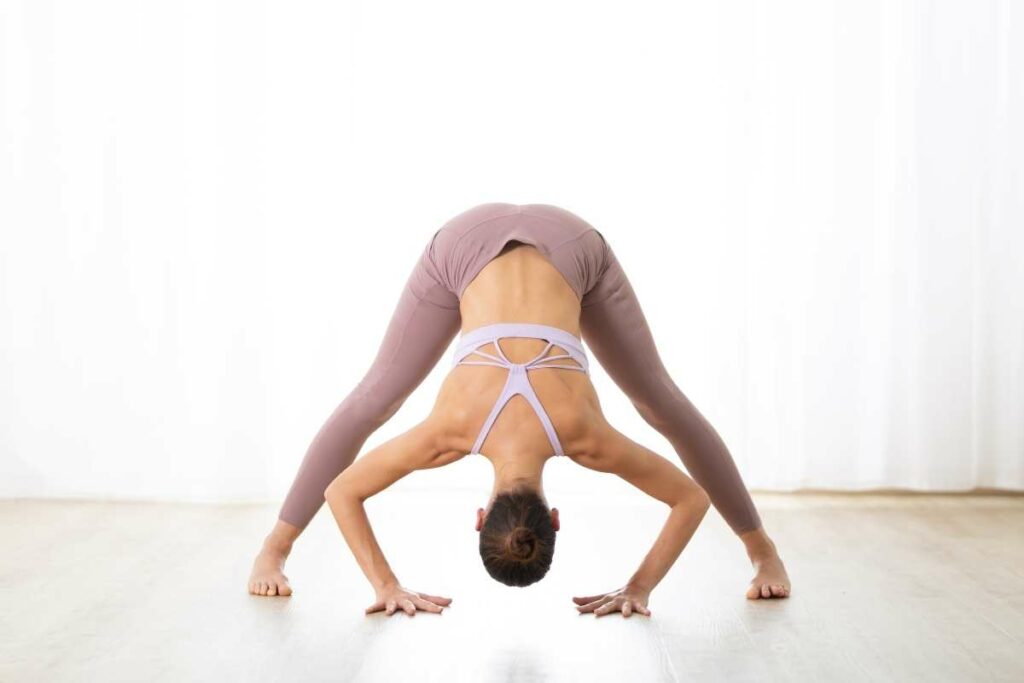
This bikram yoga pose is a basic yoga pose that offers many benefits. This forward-bending pose stretches the hamstrings and lower back, and can help to relieve tension headaches and fatigue. It also helps to improve balance and concentration.
To practice the Standing Separate Leg Stretching Pose, begin with your feet wide apart and your hands at your sides. As you exhale, bend forward from the hips, keeping your spine straight. Place your hands on the floor beside your feet, or on your shins if you cannot reach the floor. breathe deeply and hold the pose for up to one minute. To release the pose, exhale as you slowly roll up to standing.
Triangle Pose (Trikonasana)
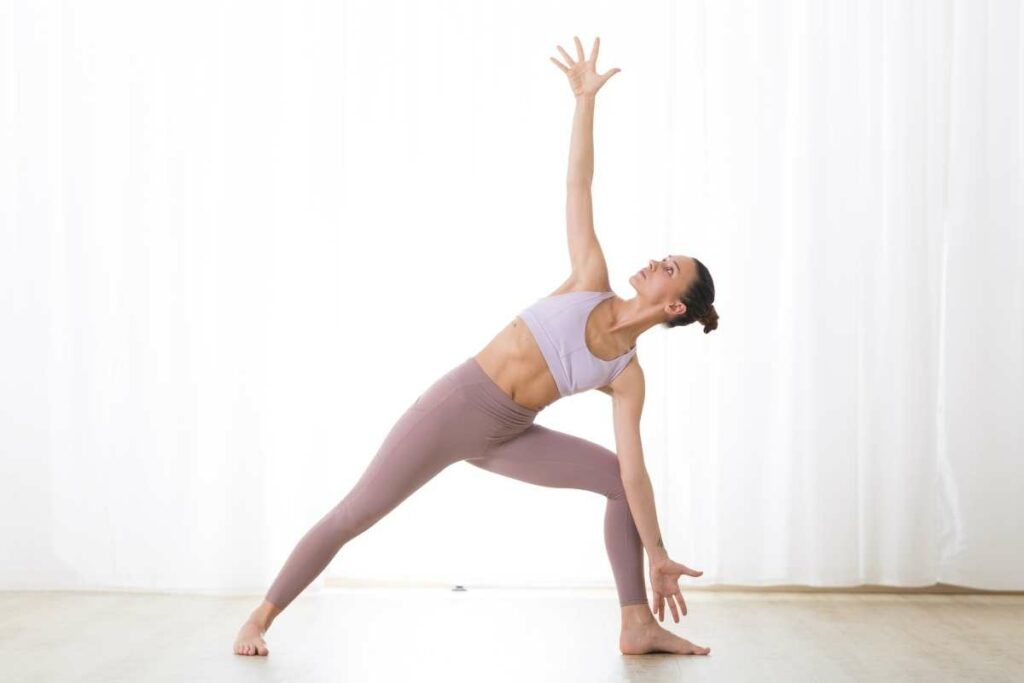
Triangle Pose is a beginner-friendly yoga asana that offers a plethora of benefits. The pose helps to improve flexibility, relieve lower back pain, and tone the thighs, hips, and butt. Triangle Pose can also help to improve balance and concentration.
The pose is performed by standing with the feet hip-width apart and the arms extended out to the sides. Then, the body is rotated to the right, and the right hand is placed on the floor near the right foot. The left hand is then raised above the head. The body should be aligned so that the left shoulder is directly over the right knee and both hips are facing forward.
The gaze should be directed upward toward the left hand. To deepen the stretch, the left hip can be moved slightly forward while maintaining a strong foundation with the right foot. Triangle Pose can be held for up to one minute before returning to standing and repeating on the other side.
Standing Separate Head To Knee Pose (Dandayamana-Bibhaktapada-Janushirasana)
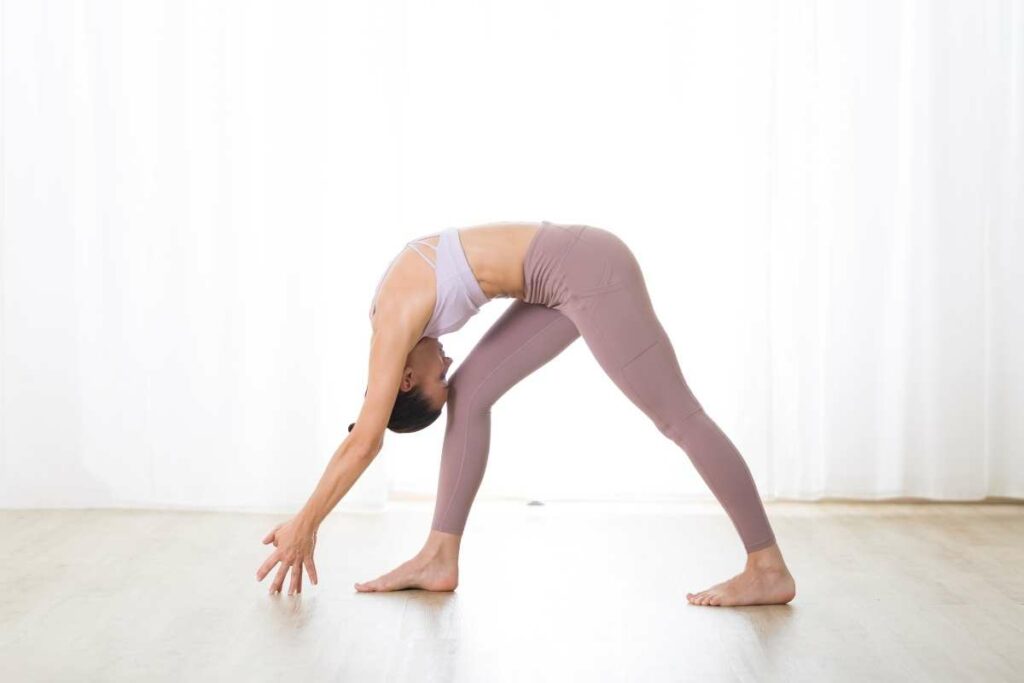
The Standing Separate Head to Knee Pose is a great way to improve flexibility and strength in the legs, back, and shoulders.
To perform the pose, begin by standing with your feet together and your hands at your sides. Then, step forward with your right leg and bend forward from the waist, keeping your back straight. As you bend, reach out and grab your right ankle with your right hand. If you can’t reach your ankle, grab your calf or thigh. Hold the pose for 30 seconds to 1 minute. Then, release your leg and stand up straight. Repeat the pose on the other side.
Tree Pose (Vrikshasana)
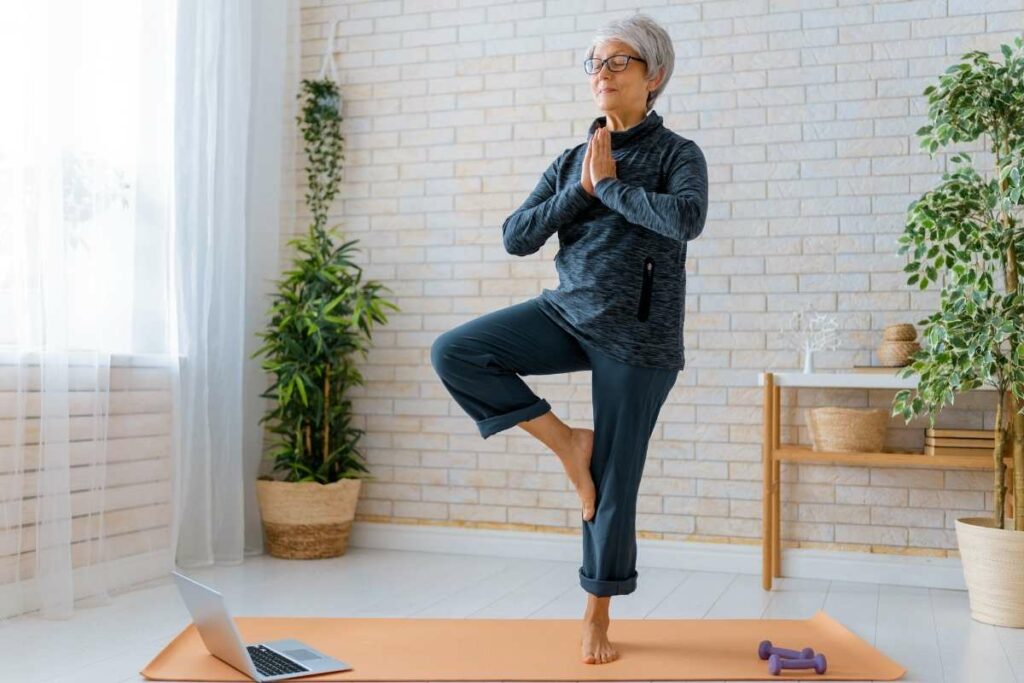
Tree pose is a great way to improve your balance and flexibility. The benefits of the pose include improved concentration and focus as well as increased energy levels.
To perform tree pose, start in mountain pose with your feet together and your hands at your sides. Then, shift your weight onto your left foot and bring your right foot up to rest against your left ankle, calf or thigh. Make sure that your standing leg is strong and press your heel firmly into the ground.
Once you feel stable, begin to raise your arms overhead, keeping your shoulders down and away from your ears. Hold the pose for several breaths before releasing back into mountain pose.
Toe Stand Pose (Padangustasana)
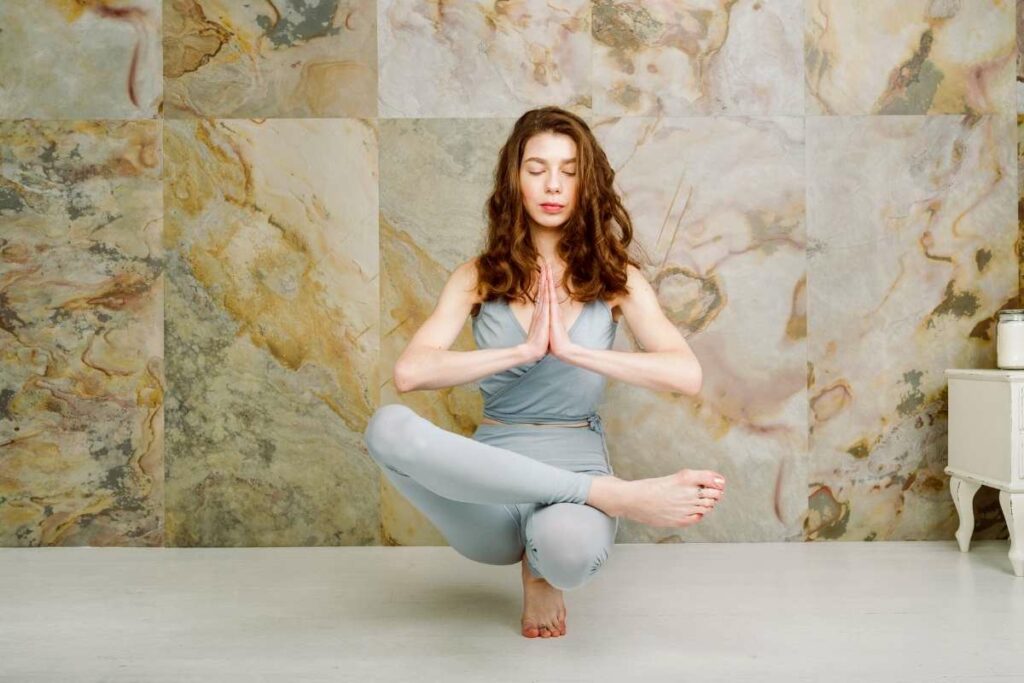
This bikran yoga pose offers a range of benefits for both the mind and body. The pose helps to improve balance and coordination, while also stretching the hamstrings, calves, and ankles. In addition, the pose can help to relieve stress and tension headaches.
This one will take some practice as I feel it’s the hardest bikram pose to master as far as balance goes.
Stand straight with your arms by the side. As you bend your right knee towards your chest, bring your right foot to rest on your left knee. The sole of your foot should be facing upwards.
Now for the tricky part! Slowly squat down on your standing left leg and bring your butt to rest on the heel of your left foot. Your left thigh should be parallel to the ground. Practice the move on both sides, left and right, for ultimate balance.
Dead Body Pose (Savasana)

Sounds morbid, but it’s the pose most yogis look forward to at the end of a yoga practice….for a bikram yoga sequence, it falls right in the middle.
The Dead Body Pose (a.k.a.the Corpse Pose) is said to be beneficial for the nervous system, as it helps to release tension and stress. It is also thought to improve circulation and boost energy levels.
To perform the Dead Body Pose, simply lie on your back with your legs and arms extended. Close your eyes and focus on relaxing your entire body. Breathe deeply and slowly, and stay in this position for as long as you feel comfortable. When you are ready to come out of the pose, slowly roll to one side and press up into a seated position.
Wind-Relieving Pose (Pavanamuktasana)
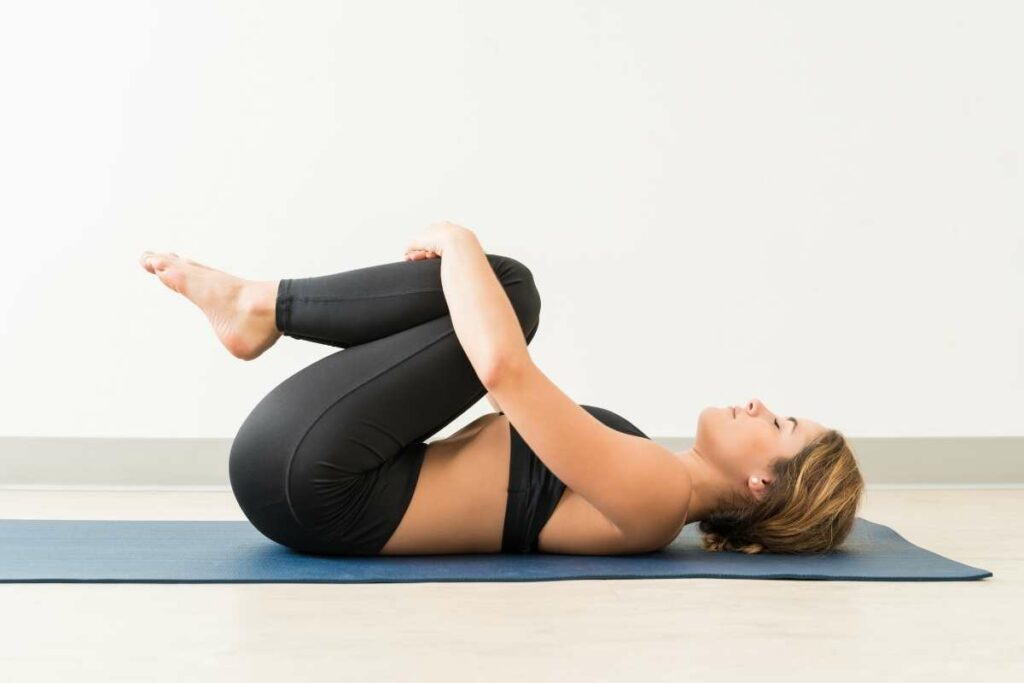
The wind-relieving pose is a great way to relieve gas and bloating. (Pun intended? I didn’t make this up, lol) It is also a good stretch for the spine.
To perform the pose, lie on your back on a yoga mat with your knees bent and your feet flat on the ground. Place your hands on your stomach. As you exhale, bring your right knee to your chest and hug it with your arms. As you inhale, return your leg to the starting position. Repeat with your left leg.
You can also do this pose with both legs at the same time.
Sit Up Pose (Padahastasana)

The Sit Up pose (not to be confused with the abdominal crunch variety) is great for centering your mind, energizing the body, and stretching your legs.
Also referred to as Head-to-Knee pose, perform this pose by sitting on the ground with your legs straight in front of you. Keeping your back straight and your feet together, slowly bend forward at the waist, reaching for your toes.
Cobra Pose (Bhujangasana)
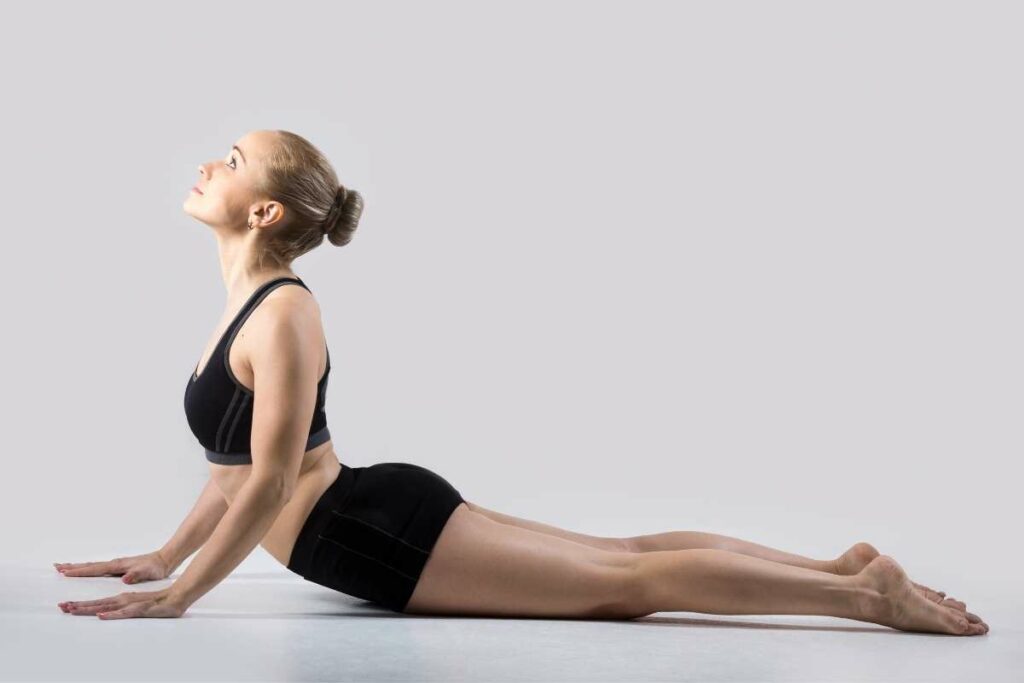
One of the many benefits of practicing yoga is that it helps to improve flexibility. This is particularly true of Cobra Pose, which is an excellent way to stretch the muscles in the back and shoulders. Cobra Pose also helps to strengthen the spine and open the chest, improving posture and aiding in deep breathing.
To perform Cobra Pose, begin by lying on your stomach with your feet hip-width apart and your palms flat on the floor beside your shoulders. As you inhale, press your palms into the floor and lift your head and chest off the ground. Keep your elbows close to your sides, and use your back muscles to support your upper body.
Hold the pose for a few breaths, then release back down to the starting position.
Locust Pose (Salabhasana)
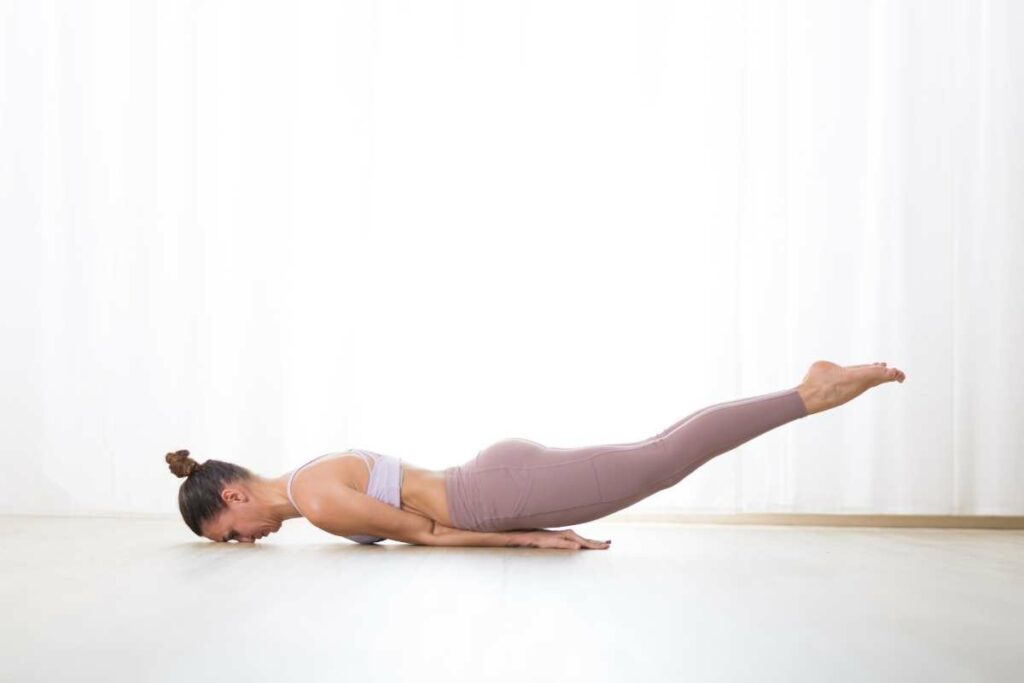
The locust pose is a restorative yoga pose that offers a number of benefits. It can help to improve posture, relieve back pain, and increase flexibility. The pose can also be used as a way to relax the mind and body.
To perform the locust pose, start by lying on your stomach with your arms at your sides. Next, while pushing down with your chest and arms, lift your legs off the ground. Hold the pose for five to 10 breaths, then slowly lower back down to the starting position. Remember to keep your neck in line with your spine throughout the entire pose.
Starting out, you may need to practice with lifting one leg at a time and work up to raising both legs in the air.
Full Locust Pose (Poorna Salabhasana)
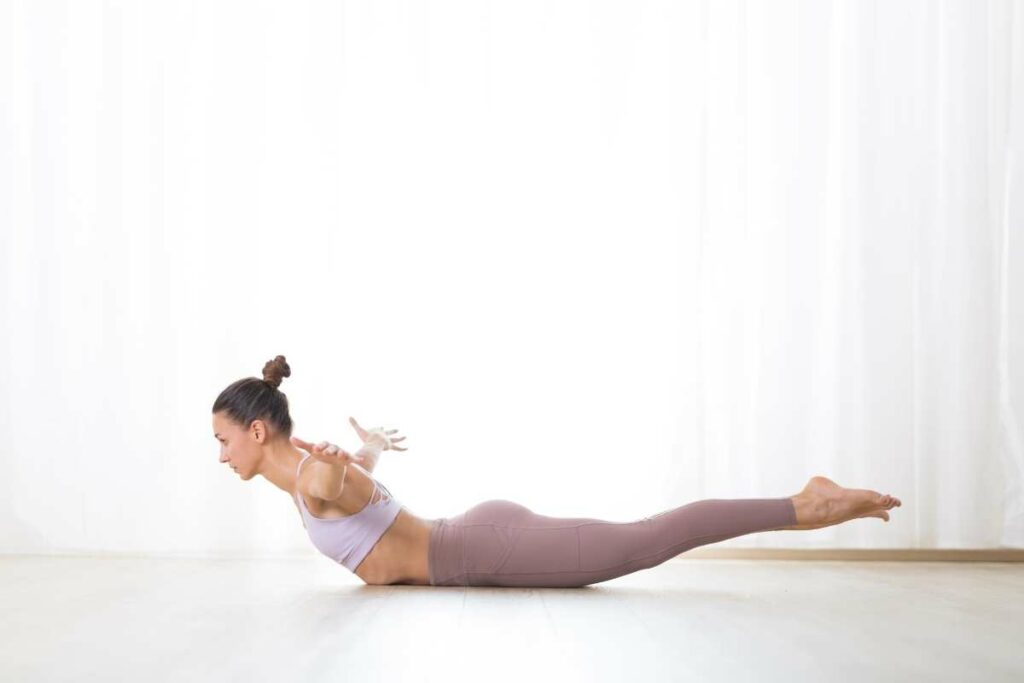
This is similar to the regular locust pose, and I find that it’s actually easier.
The full locust pose is a great way to strengthen the back and open up the chest and shoulders. It can also help to improve posture and relieve tension headaches.
To perform the pose, lie down on your stomach with your legs extended straight behind you. Place your arms at your sides, palms facing up. inhale and lift your head, chest and legs off the ground, keeping your pelvis on the floor.
As you exhale, lower your back and legs to the floor. Repeat the pose 10-15 times.
Bow Pose (Dhanurasana)
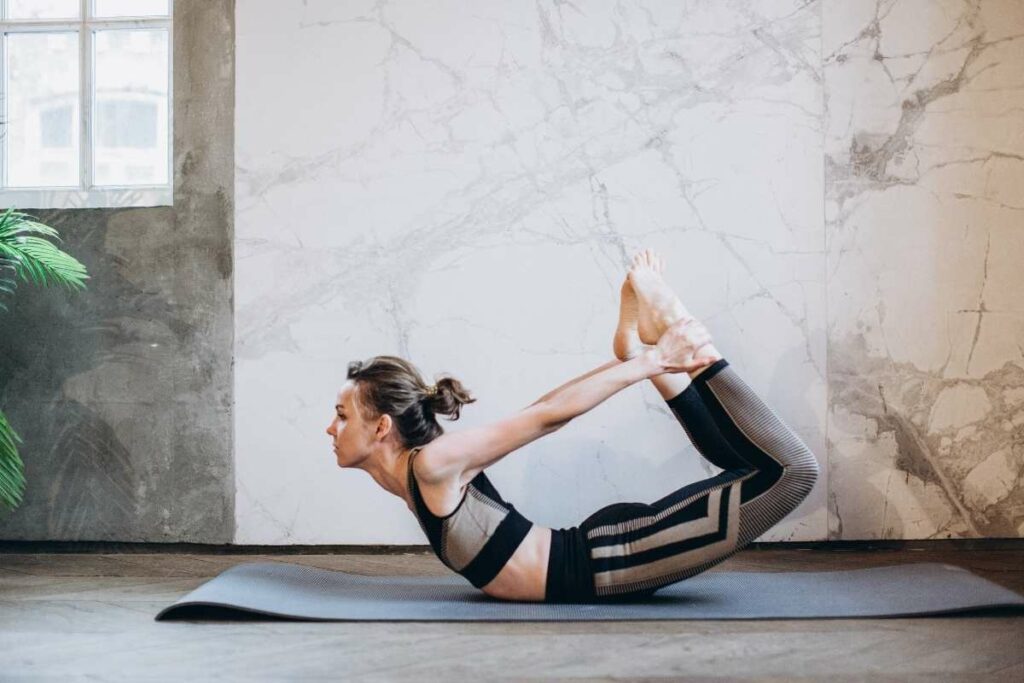
Bow pose, or Dhanurasana, is a yoga asana that offers a variety of benefits. The pose stretches the front of the body, including the chest and shoulders, and strengthens the back muscles. It can also help to improve posture and relieve tension headaches.
To perform Bow pose, lie flat on your stomach with your feet hip-width apart. Bend your knees and reach back to grab hold of your ankles. As you exhale, lift your chest and legs off the ground, drawing your heels toward your glutes. Hold the pose for a few breaths before releasing and returning to starting position. With regular practice, you can deepen the pose. Remember to keep your breath smooth and steady as you move through the pose.
Fixed Firm Pose (Supta Vajrasana)
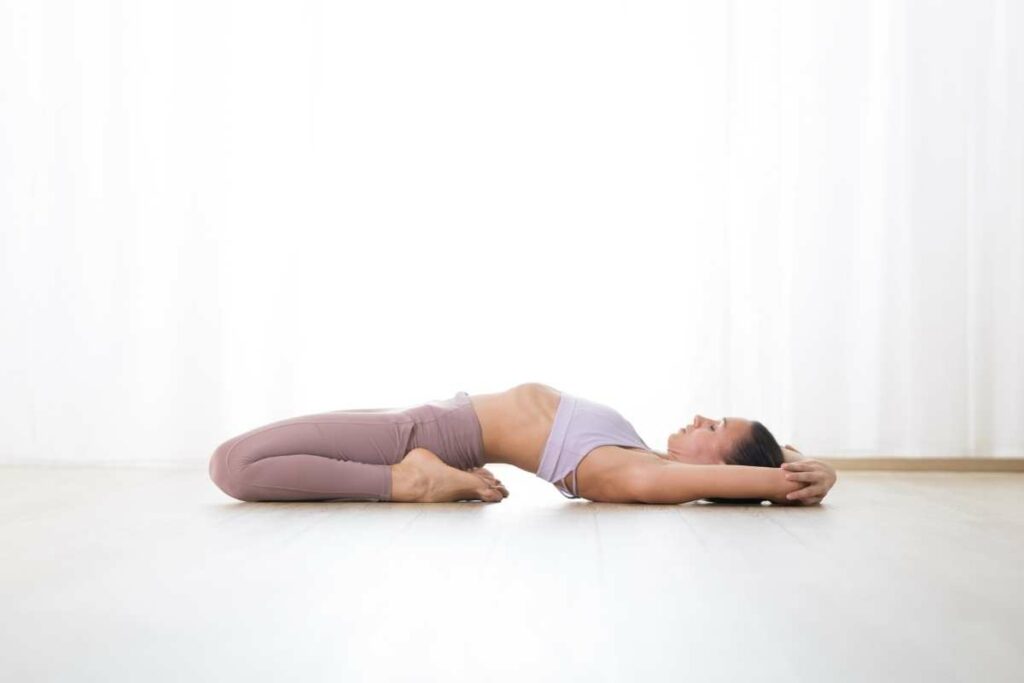
This pose helps to stretch the hips and groin, and can also be used as a gentle way to open the shoulders and chest. In addition, the fixed firm pose can help to relieve stress and fatigue.
To perform this pose, begin by sitting on the ground with your legs straight in front of you. Next, bend your knees and bring your feet in towards your pelvis.
Press your palms together in front of your chest, and then exhale as you lean forward and fold at the waist. Hold this position for 30 seconds to 1 minute before returning to the starting position. Remember to breathe deeply throughout the pose.
Half Tortoise (Ardha Kurmasana)
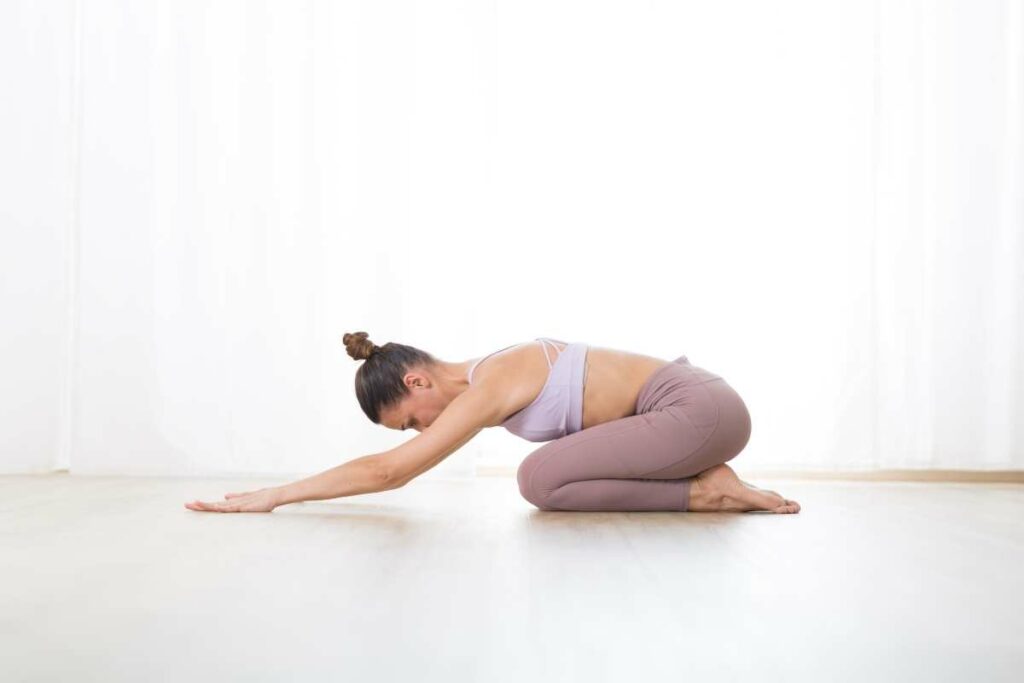
The Half Tortoise pose (a.k.a. the Child’s Pose) is a restorative yoga pose that provides a variety of benefits. This pose helps to improve digestion, relieve stress and anxiety, and stretch the shoulders, hips, and spine.
To perform the Half Tortoise pose, start on your knees and sit back on you heels. As you exhale, walk your arms in front of you, bringing your torso down and rest your forehead on the ground.
You can keep your arms out in front of you or rest them down by your sides.
Take slow, deep breaths, and enjoy this relaxing pose.
Camel Pose (Ustrasana)

Camel pose is a deep backbend that opens the front body. It stretches the quads, chest, shoulders, and neck. It’s also a great way to improve posture. In addition, camel pose strengthens the back muscles and can help relieve lower back pain.
To perform camel pose, begin on your knees with your legs hip-width apart and your knees inline with your ankles. Place your hands on either side of your hips. As you exhale, arch your back and reach your hands behind you to grab hold of your ankles or heels.
Keep your gaze forward or up toward the sky. Hold the pose for at least 30 seconds before releasing and returning to a kneeling position. Repeat the pose 2-3 times.
Rabbit Pose (Sasankasana)
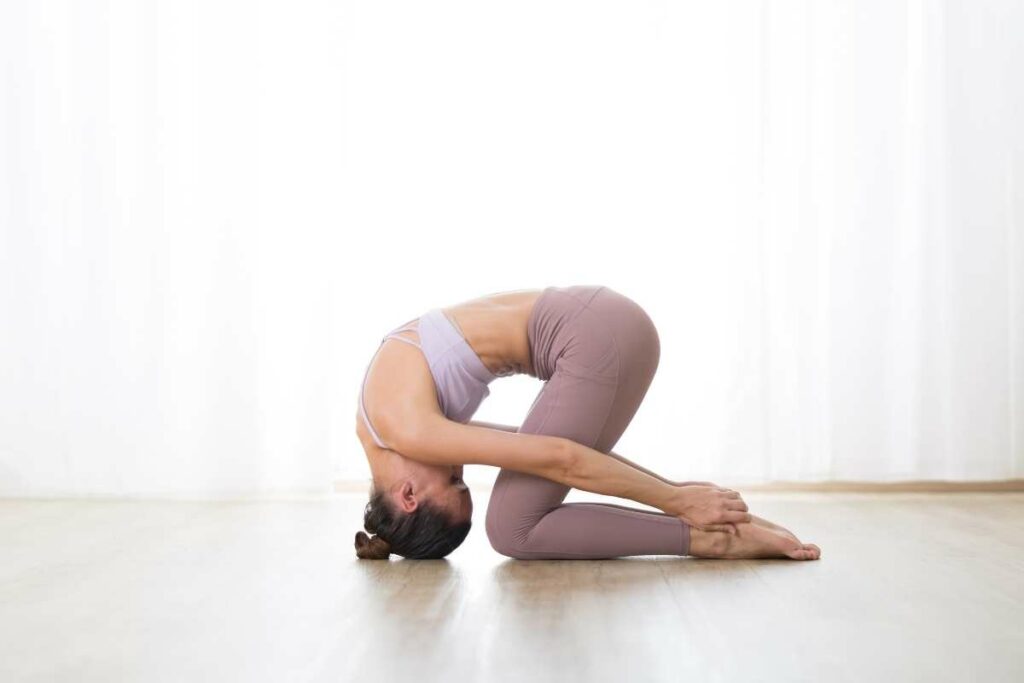
The rabbit pose is similar to the child’s pose, except your butt is in the air instead of sitting back on your heals.
It’s an inversion pose of the camel pose that can be beneficial for beginners or experienced yogis alike.
The pose helps to stretch the spine and open up the chest, providing relief from tension and fatigue. Additionally, Rabbit pose can help to boost circulation and improve digestion.
To perform Rabbit pose, begin by sitting back on your heels. Grab your heals with the back of your hands facing out and round down and place your head on the floor while at the same time lifting your hips in the air.
Sitting Head To Knee Stretching Pose (Janushirasana-Paschimottanasana)
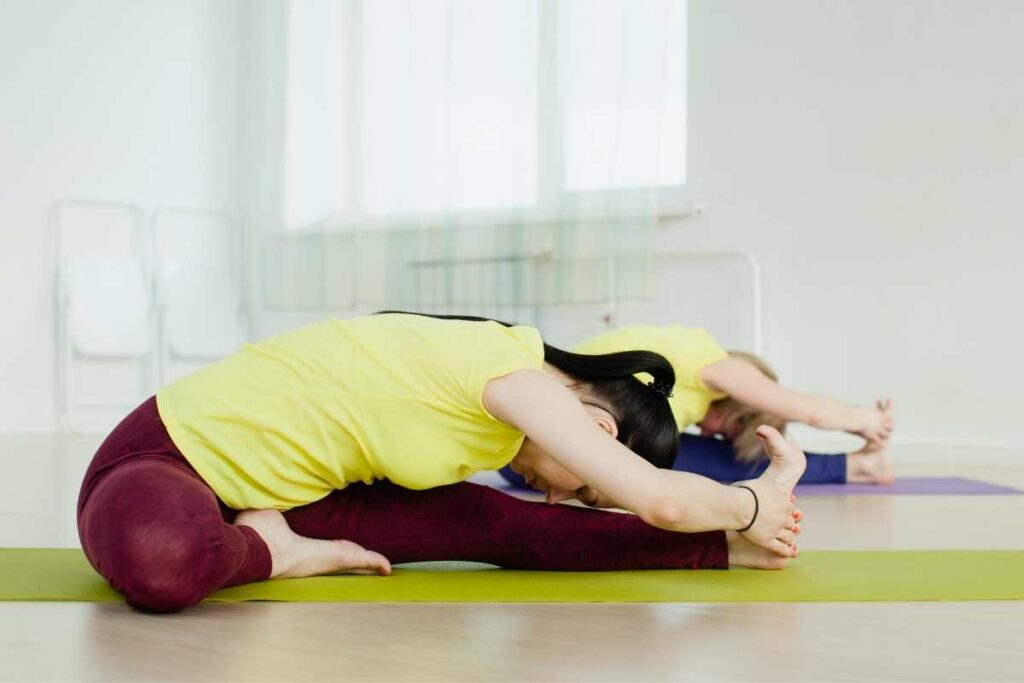
The Sitting Head To Knee Stretching Pose is a great way to improve flexibility and increase blood flow to the brain. The pose helps to lengthen the spine and open up the hips. It also stretches the hamstrings, calves, and groin.
To perform the Sitting Head To Knee Stretching Pose, sit on the ground with your legs extended in front of you. Bend your right knee and bring your foot to the inside of your left thigh. Reach your arms around your left leg and hug it close to your body. If you can’t reach your leg, use a straps or towel to help you. Hold the pose for at least 30 seconds. Repeat on the other side.
Spine Twisting Pose (Ardha Matsyendrasana)
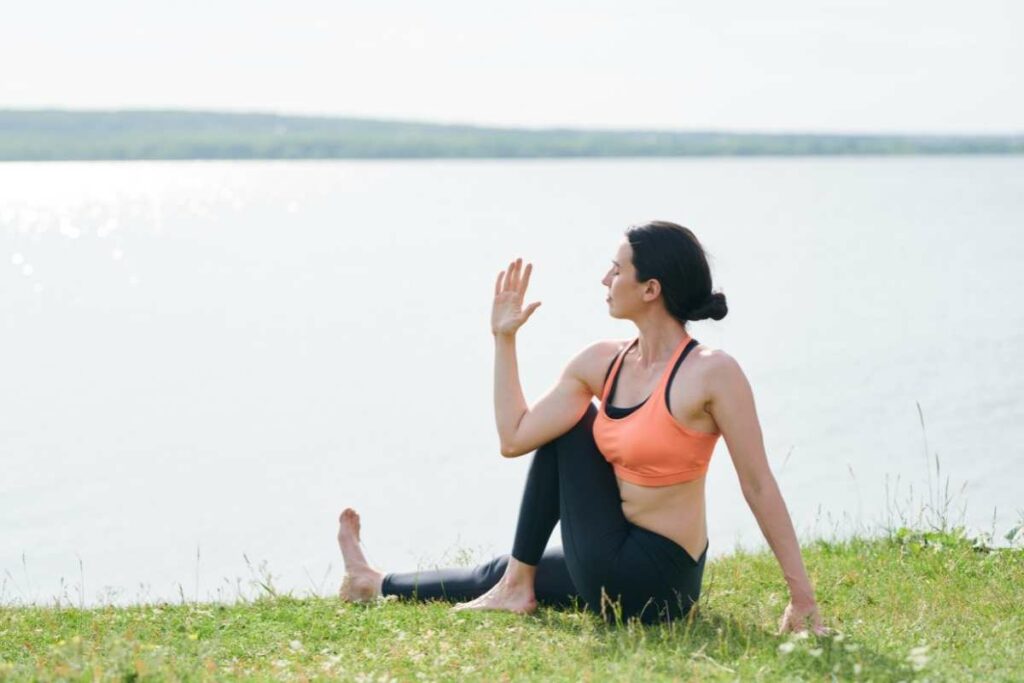
The spine twisting pose is a great way to relieving tension in the spine, neck and shoulders. The pose also energizes the body, improving circulation and stimulating the digestive system.
To perform the pose, begin by sitting on the ground with your legs extended in front of you. Bend your right knee and place your foot on the ground next to your left thigh.
Place your left hand on the ground behind you, and twist your torso to the right, placing your right hand on the ground beside you. Hold the pose for 5-10 breaths, then repeat on the other side.
Skull Shining Breathing Technique (Kapalbhati Pranayama)

The Skull Shining Breath, or Kapalabhati, is a powerful yoga breathing technique that has a variety of benefits.
By purifying the lungs and increasing oxygenation of the blood, the Skull Shining Breath can help to improve energy levels and mental clarity. Additionally, this breath can help to strengthen the abdominal muscles and improve digestion.
The Skull Shining Breath is usually performed in a seated position with the hands resting on the knees. First, take a deep breath in through the nose. As you exhale forcefully through the nose, pull the stomach in sharply.
Repeat this movement for 10-15 breaths, then take a few deep breaths and release. You should feel invigorated and refreshed after performing the Skull Shining Breath!
Are you ready to try these Hot Yoga Poses?
The benefits of hot yoga are many and include increased flexibility, improved circulation, decreased stress levels and detoxification.
If you’re new to hot yoga, be sure to drink plenty of water and take breaks as needed. Remember, the key is to listen to your body and not push yourself too hard.
Now that you know a little bit more about hot yoga, give it a try! You just might surprise yourself at how much you enjoy it. Namaste!
Related Articles
- The Best 7 Therapeutic Yoga Poses for a Longer, Healthier Life
- Can You Do Yoga Every Day?
- 4 Best Healthy and Eco Friendly Yoga Mats + How to Choose One
- Yoga For Beginners: 7 Essential Poses (PDF Included!)
- 5 Yoga Workouts for Beginners to Improve Balance
- 20-Minute Beginner Yoga Workout For Flexibility

I love yoga, but I have never tried Bikram. I only done some hot Pilates in a studio that was teaching hot yoga, and I really enjoyed the warmth. My body opened up more easily. I will have to try Bikram as well!